Philip Daughtry, Runaway Angels
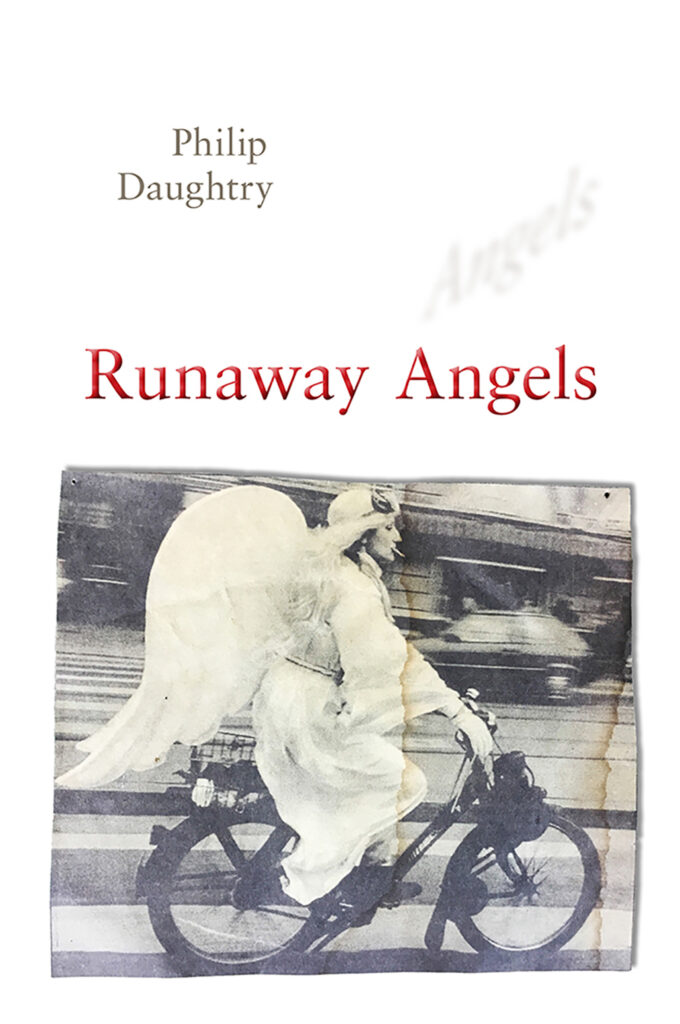
Poet Philip Daughtry was born near Newcastle-upon-Tyne, England, in 1942, but he is also a descendant of legendary American outlaws Frank and Jesse James. That duality is present in his poetry, which ranges from verses written in the Geordie dialect of his childhood, to reflections on the small towns and wide open spaces of the American West.
Daughtry’s most recent collection of poems, Runaway Angels, was published earlier this year. It forms a kaleidoscopic and elegiac autobiography that follows the poet’s life from early childhood in a bleak Northumbrian mining town to a fiercely independent life forged from experiences on cattle ranches, in Greenwich Village and San Francisco at the height of the beat era, and as a world traveler.
Runaway Angels captures moments from a peripatetic life: reflections on a rooster on Crete, and of acacia thorns in Africa. Memories of difficult post war years in Britain that are among Daughtry’s earliest memories, and verses on his eucalyptus and oak shaded later years in Topanga Canyon.
Daughtry’s poetry is sparse and thoughtful. Each word is carefully chosen, smooth and well rounded as a pebble shaped by the tide, tough and durable as an old root.
He writes that a poetry reading by Robert Bly in 1969 inspired him to begin writing poetry. “Bly was the first man I’d ever encountered possessed of a fearless joyousness, bountiful intelligence and compelling artfulness that I decided perhaps only poetry demands. Little did I know I’d assigned myself a lifetime task.”
Runaway Angels is a collection of poems honed by a lifetime as a poet. Many of the final poems are in memoriam for lost friends. One short poem for fellow poet Dale Pendell transforms grief into beauty.
In soul-awakened night
a ghost deer
comes for my tears:
drink, there is plenty
death does not seal
a poet’s lips
nor end
his grace of love
transforming
sorrow into moonlight.
The book concludes with the poet’s thoughts on his own mortality, but in a joyous not morbid way.
Whatever arranges life
divining its secrets
guides my destiny
beyond the sea
where lighter
than a migrant hummingbird
nestled under a swan’s wing
my soul is carried home.
This is a powerful and moving collection of poems. Words to savor and read aloud on long autumn evenings. Available on Amazon
Douglas Woods, Ladies of the Canyon
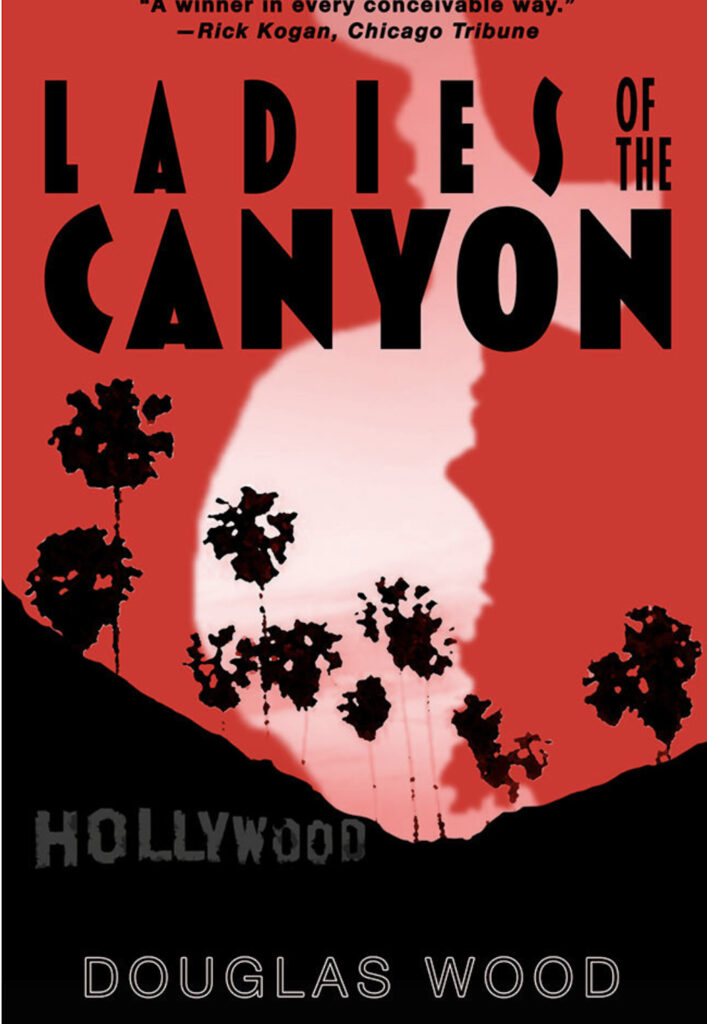
Douglas Woods is a longtime film industry writer and producer who published his first novel this year. It’s as different as any book could be from Daughtry’s poetry, but it shares a strong sense of place. Woods lives in Topanga, but as the title taken from the song by Joni Mitchell suggests, the eponymous canyon in the title of his book is Laurel Canyon. The setting is a key element of the narrative. And like the song, the book focuses on three canyon women.
Ladies of the Canyon is a psychological thriller that revolves around a troubled young actress who is trying to cope with substance abuse and finds herself caught in a dangerous plot involving murder.
Woods tackles the novel using first-person present tense, switching between the suicidal and burnt out Pearl who is the victim of domestic violence; and Devon, the 23-year-old female protagonist who has had early success as an actress and is now trying to break out of a vicious cycle of substance abuse and self-destructive behavior. We read the Kindle edition, and found the switch between voices difficult to follow, but that is a criticism of the e-reader’s formatting, not the author’s work.
Woods began his career as an actor, and this book is a searing critique on how the entertainment industry uses, abuses, and discards young talents. It’s a dark, bitter note that adds a core of realism to this well-crafted thriller. https://www.writewoodink.com/novel.html
Matthew Leising, Out of the Ether: The Amazing Story of Ethereum and the $55 Million Heist that Almost Destroyed It All
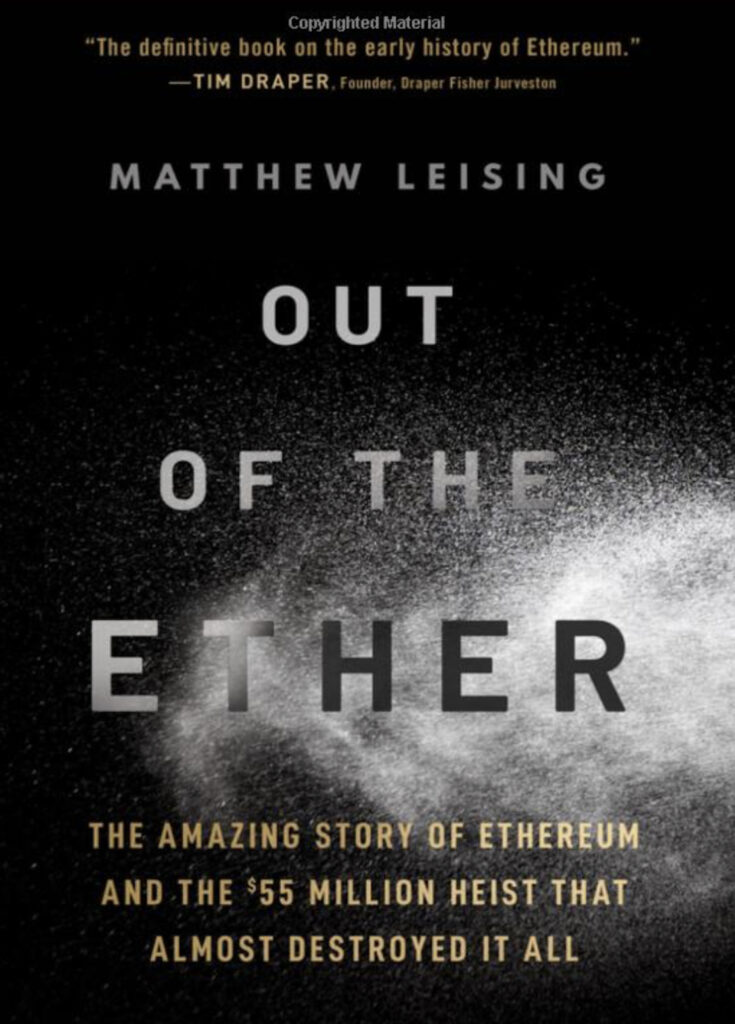
Matthew Leising’s new book is nonfiction, but the story it tells is a real world thriller that reads like a 1990s sci-fi bestseller by Michael Crichton.
“The future was broken,” the first sentence states. Leising has covered the emerging cryptocurrency technology for Bloomberg News for years. Out of the Ether evolved from his 2017 story “The Ether Thief” for Bloomberg Markets Magazine.
The book chronicles a 2016 virtual heist that involved the disappearance of cryptocurrency valued at $55 million, and sets out to solve this astonishing cybercrime. He also tells the story of how inventor Vitalik Buterin and a group of individuals straight out of a Philip K. Dick story, created the Ethereum blockchain and built the second-largest cryptocurrency after Bitcoin.
It’s a compelling read. Leising tells the story with panache as well as attention to detail. The official description states: “Perfect for anyone with even a passing interest in the world of modern fintech or daring electronic heists, Out of the Ether is a story of genius and greed that’s so incredible you may just choose not to believe it.” Follow Matt on Twitter @MattLeising
Anna Penenberg, Dancing in the Narrows
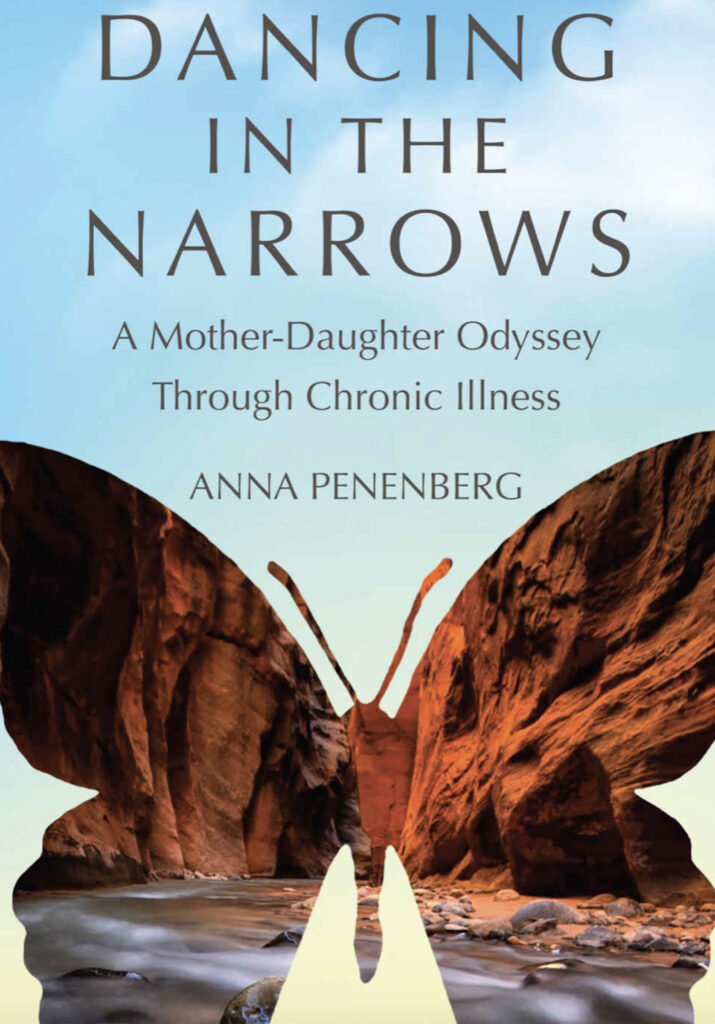
In 2007, Anna Penenberg’s 16-year-old daughter Dana developed a debilitating illness that was later identified as Chronic Lyme Disease. Penenberg began writing her book Dancing in the Narrows during the agonizing, multiyear quest for answers and remedies.
Penenberg is a Kundalini Yoga teacher and a somatic therapist in craniosacral therapy. She has always embraced a healthy lifestyle for herself and her family and was devastated when her daughter became critically ill.
“Lyme is not well understood,” Penenberg told the Topanga New Times. “I was learning along the way. I wrote the book to go over what happened to me, I zipped myself open to show what goes on behind the scenes with an illness. Writing was part of the healing.”
Penenberg and her daughter ultimately rejected conventional treatment with extended high potency antibiotics and sought alternative approaches to healing that ranged from a controversial experimental treatment in Mexico to herbal supplements and a diet focused on micronutrients and probiotics.
The healing odyssey is still ongoing, but Dana has recovered her health to the point where she now has a life of her own, and a career as a healer. “She knows what it is like to have pain,” her mother said. “She has become a master healer.”
Dancing in the Narrows is very much an autobiography, one that focuses on the stress of living in isolation and under the weight of fear for a loved one, and how the author found the strength to cope and transform the experience into something positive.
“It’s amazingly synchronistic that my book was published during COVID,” she said. “Many people are now going through the issues of physical and emotional recovery, isolation, deprivation. Readers will find resonance with various ways of being.”
Learn more about the author at www.annapenenberg.com
David Dayan Fisher, The Bu Ddhas
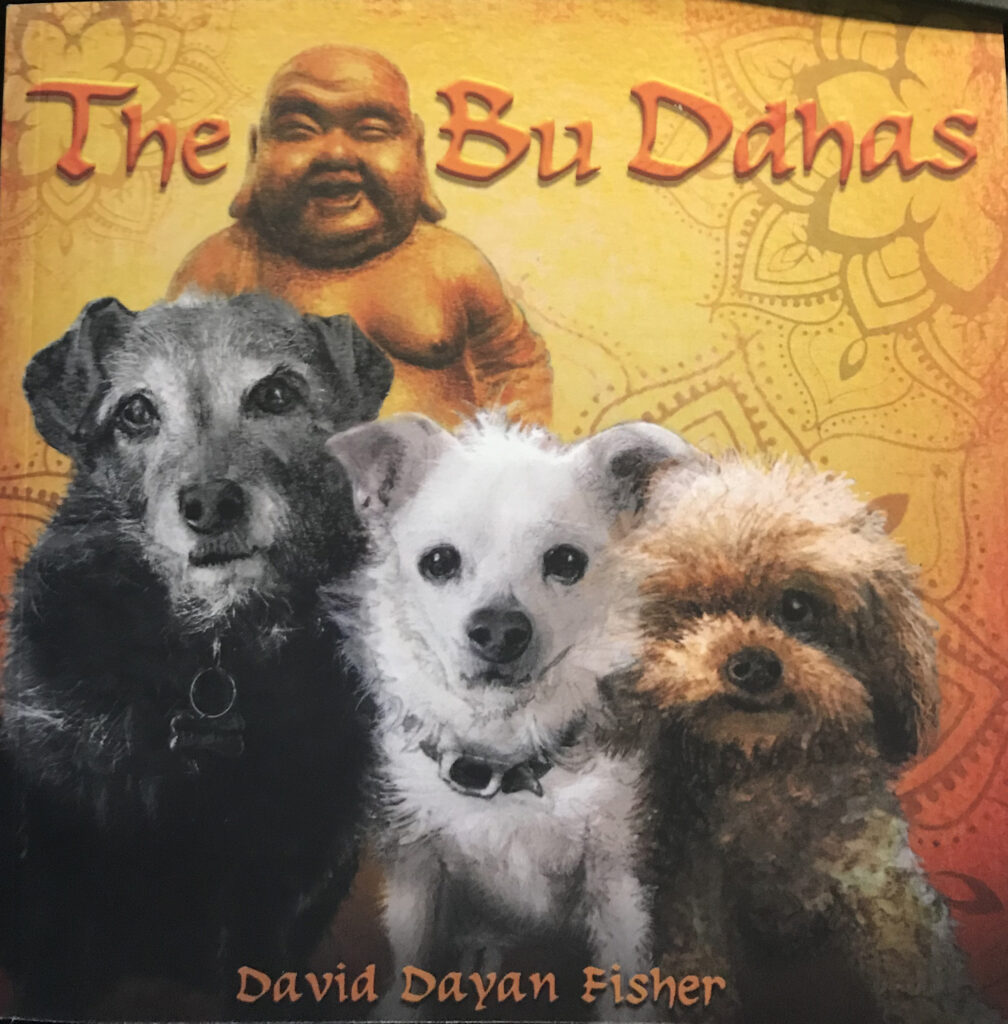
Once upon a time there were three little dogs named Bu, Monkey and Mika.
Since Bu was the oldest and also very wise, Monkey and Mika watched him and followed his lead. And they came to be known as the Bu and Ddhas.
This charmer of a story is best read out loud and will entertain young and old alike as calm Bu helps Monkey and Mika to shed their harmful habits and find solace and peace in a Middle Way. While the Ddhas hurl themselves with doggie vigor at the front door when the UPS man shows up with a delivery, Bu perches calmly on the sofa knowing that barking and growling will not change the outcome.
In time he helps the Ddahs to start looking at themselves in a new way “You have to be able to see you being you” he counseled.
A sweet tale of building self-awareness and forgiveness emerges with the fairy tale ending of
Let it and let it be
You will always see
And from this way
You will always see
Find more of Fisher’s work at www.daviddayanfisher.com




